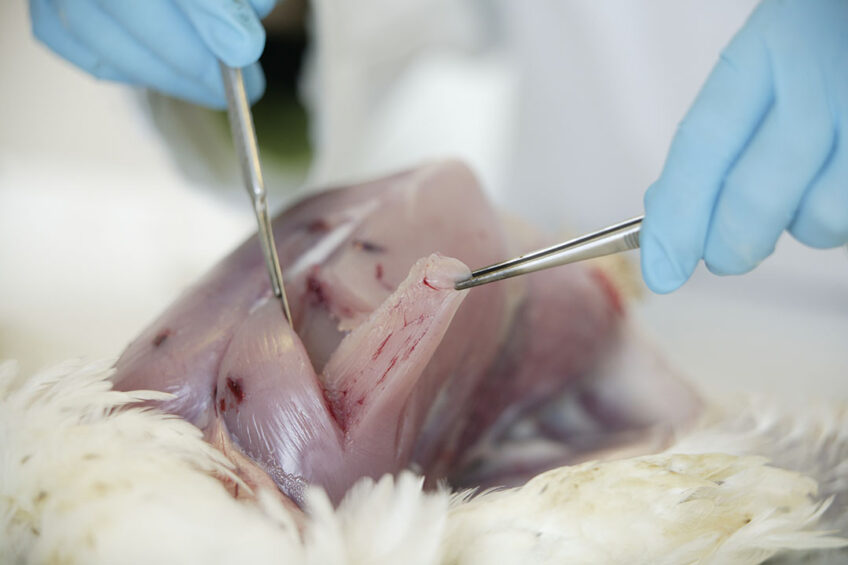Effects of anti-microbial interventions during the slaughter

Poultry processors apply several anti-microbial interventions to avoid cross-contamination of Salmonella, Campylobacter and Escherichia coli. Researchers looked into the impact of pH on the efficacy of peroxy acetic acid in combatting these bugs in the processing plant.
With increasing chicken meat consumption, a greater number of broilers are being raised and processed. Foodborne pathogens Salmonella and Campylobacter are commensals in a broiler’s gastrointestinal tract and, in most cases, do not cause any disease in the birds.
The current order in poultry processing presents a potential risk of cross-contamination between carcasses during primary processing (slaughter) and of the meat during any second processing step (cut up and further processing) as a source of human foodborne disease.
In the US, approx 25,000 notifications of foodborne disease, with 120 deaths, were reported in 2018. The US applies performance standards for poultry processing for Salmonella and Campylobacter prevalence after chilling and for chicken parts. The Salmonella and Campylobacter performance standards for broiler carcasses, chicken parts and comminuted chicken meat are 9.8% and 15.7%, 15.4% and 7.7%, and 25% and 1.9%, respectively.
Avoiding cross-contamination
As live birds are often contaminated with these potential pathogens, in order to avoid cross-contamination and further contamination, poultry processors apply several anti-microbial interventions during the slaughter process.
Anti-microbials are mostly used after picking, in the inside/outside bird washer or in the chiller water. For this purpose, peroxy acetic acid is the preferred chemical typically used by poultry processors at pH levels from natural, ranging between 4.5 and 6.0, up to pH 8.0. At a lower pH the acid is more effective but also affects moisture loss from the carcasses and even causes corrosion of the equipment.
Making every broiler chick fit to survive
When preparing broiler feeds, how to ensure total performance and profitability? Key to that is a quick adaptation and a smooth transition after hatch. A carefully balanced and well-designed broiler feeding strategy forms part of that approach. Here is how to do that. Read more…
As the US Department of Agriculture performance standards also prescribe that processors utilise Escherichia coli as indicator organisms for process control, in this study the efficacy of peroxy acetic acid in combatting Salmonella, Campylobacter and Escherichia coli was estimated at different pH levels.
The effects were tested on chicken wings that had been artificially inoculated with Salmonella typhimurium, Campylobacter coli and Escherichia coli strains. Inoculated chicken wings were immersed (for 10 or 60 minutes) in peroxy acetic acid solutions at natural pH, pH 8.2 or pH 10.0 and rinsed. Serial dilutions of the rinses were used to
estimate the effects on bacterial populations.
Significant results
At neutral pH for 60 minutes the effects were significantly better than with other treatments. In general, higher concentrations and longer exposure resulted in greater reductions in the bacterial populations, while increasing the pH to 8.2 and 10.0 did not improve efficacy.
A strong correlation was found for the effects of the peroxy acetic acid treatment on the indicator strain Escherichia coli and on Salmonella, indicating that this indicator strain can be used for this purpose.
Author:
Vaddu, Kataria, Rama, Moller, Gouru, Singh and Thippareddi, Poultry Science












